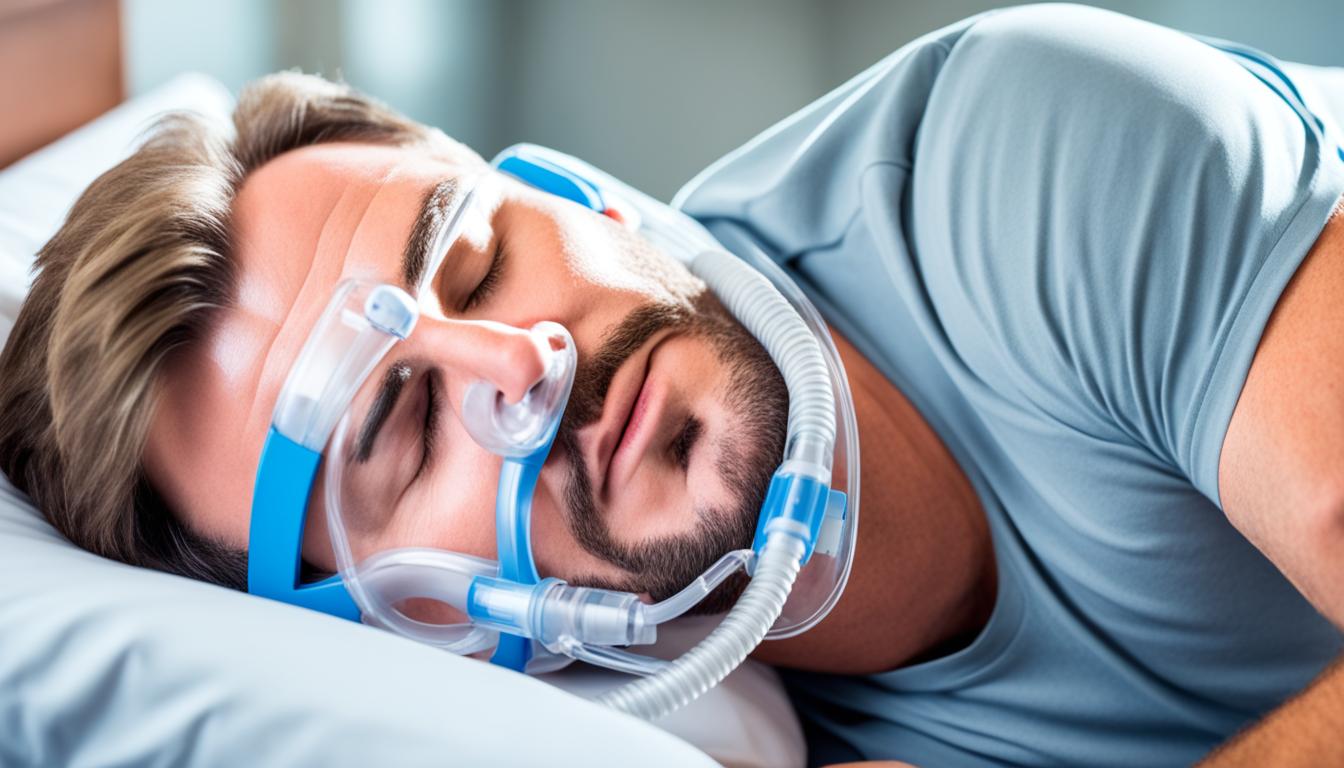Obstructive sleep apnea (OSA) is a sleep disorder. It shows up as repeated blocks in the upper airways while sleeping. These blockages cause pauses in breathing and lower oxygen in the blood. You may notice signs like loud snoring and feeling very sleepy in the day. Other symptoms are being tired often, headaches in the morning, and struggling to focus. The problem comes from the throat’s soft tissues collapsing and blocking the air. This is more likely if you’re obese, old, male, have a family history of OSA, or certain throat shapes.
To find out if someone has OSA, doctors usually do a sleep study. This test watches how you breathe, your oxygen, and other things while you sleep. Treatment includes ways to change your daily life, like losing weight and sleeping in different positions. It also involves using a tool called a CPAP machine. But, there’s new hope in stem cell therapy for OSA. Early studies suggest it might help fix some of the blood vessel damage linked with OSA.
Key Takeaways:
- Obstructive sleep apnea (OSA) can lead to loud snoring, being very tired in the day, and trouble concentrating.
- It happens when the soft tissues in the throat collapse, stopping proper airflow during sleep.
- Diagnosing OSA often involves a sleep study that checks your breathing and other sleep signs.
- OSA treatment includes making changes to how you live and using a CPAP machine.
- Stem cell therapy shows potential in fixing blood vessel problems caused by OSA.
Symptoms and Risk Factors of Obstructive Sleep Apnea
Obstructive sleep apnea (OSA) is a common sleep disorder that can affect life quality and health. It’s important to know the signs and risk factors for OSA. This helps with early detection and the right treatment.
Chronic snoring is a key sign of OSA. This snoring comes from blocked airways during sleep. These blocks can cause breathing to stop, leading to gasping or choking at night.
Such events mess up sleep, causing daytime tiredness, fatigue, and focus problems.
OSA can harm your health beyond sleep issues. For instance, morning headaches happen because the brain doesn’t get enough oxygen during breaks in breathing. Low oxygen and poor sleep can also pull in health problems like high blood pressure, heart disease, stroke, and diabetes.
Many factors can boost your risk of OSA. Being obese makes it more likely, since extra weight can narrow airways. OSA is also more common in older folks and in men compared to women. Family history is another boost to the risk, suggesting genes might play a role.
Some physical traits, like a narrow throat or a deviated septum in the nose, can also up your chances of getting OSA.
Knowing the symptoms and risks of OSA is key to getting help. If you think you or a loved one might have OSA, talk to a doctor. A doctor can do tests and suggest the best treatments.
Diagnosis and Treatment of Obstructive Sleep Apnea
Diagnosing obstructive sleep apnea (OSA) is key to managing and treating the condition. A sleep study, called polysomnography, is often used for diagnosis. It records your sleep at home or in a sleep lab to see if you have OSA.
During a sleep study, the level of oxygen in your blood, how you breathe, brain activity, heart rhythm, and the quality of your sleep are all checked. This information helps doctors understand the seriousness of your OSA.
After an OSA diagnosis, the next step is figuring out the right treatment for you. Treatment choices vary depending on how severe the problem is.
Lifestyle changes: If your OSA is mild, living healthier can make a big difference. This means:
- Weight loss: Dropping extra pounds can lower OSA’s impact.
- Avoiding alcohol and sedatives before bed: These relax throat muscles, increasing the chance of blockage.
- Sleeping in a certain way: Sleeping with your head up or on your side can open the airways better.
Using a CPAP machine: A CPAP machine is often suggested for moderate to severe OSA. It blows a steady air pressure into your throat through a mask. This keeps your throat from closing during sleep. The CPAP machine helps with pauses in breathing, lessens snoring, and boosts blood oxygen levels. Using CPAP correctly is important for controlling OSA over time.
Other ways to treat OSA: Sometimes, there are different options, like:
- Oral devices: Made by dentists, these devices change the position of your jaw and tongue to help airflow.
- Surgery: If needed, a surgeon may remove blockages, fix problems with your throat’s shape, or correct other physical issues.
- Positional therapy: For those whose OSA comes from sleeping on their back, there are ways to train you to sleep in a different position.
Note: Always get advice from a healthcare pro for the right diagnosis and care plan that fits you and your OSA.
Stem Cell Therapy for Obstructive Sleep Apnea
In the medical field, a new treatment called stem cell therapy shows potential for obstructive sleep apnea (OSA). Early studies show promising results. They use stem cells, especially bone marrow mesenchymal stem cells (BMSCs), to tackle OSA’s root problems.
BMSCs stand out because they can change into different cell kinds, like endothelial cells. These endothelial cells are vital for blood vessel health and function. By putting BMSCs inside the body, they might travel to damaged spots in OSA patients’ blood vessels. This could help them heal and grow anew.
It’s worth mentioning that more research is needed on stem cell therapy for OSA. Yet, first looks are hopeful. They suggest it could be a new and effective way to deal with this sleep disorder. This brings hope for those looking for different treatments.

